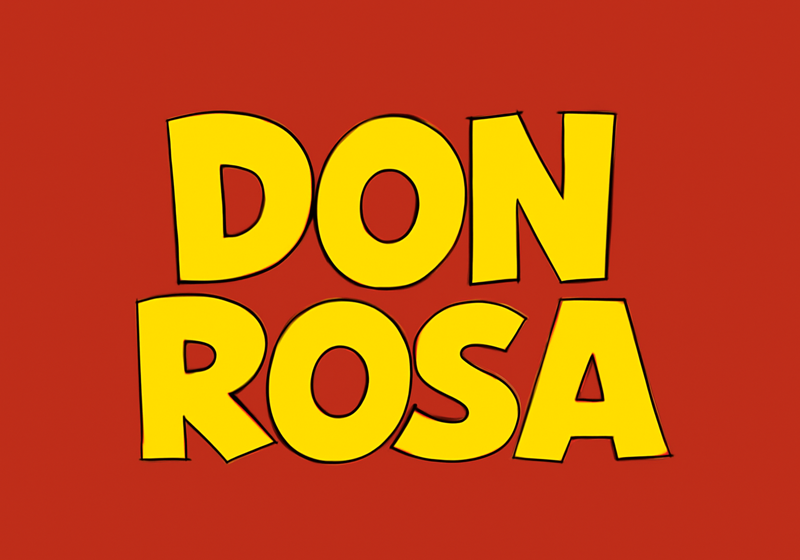Table of Contents
More than just an illustrator, Don Rosa is the comics artist who elevated fandom to art form. The self-appointed historian and archivist of Disney’s Donald Duck world, he took the legacy of his idol Carl Barks and turned it into an epic, coherent and profoundly human storytelling universe.
Rosa’s tales about Scrooge McDuck, Donald Duck and his nephews are renowned for their maniacal level of detail and fanatical fidelity to Barks’s original source material. His dedication to his craft has inspired countless authors and readers, even though his life as an artist was not always easy.
Childhood, love for comics and the influence of Carl Barks
Keno Don Hugo Rosa, known simply as Don Rosa, was born in Louisville, Kentucky, on 29 June 1951. He was raised by a family of Italian and German immigrants who, at the turn of the 20th century, started a successful ceramics business, the Keno Rosa Tile Company.
With an avid reader of an older sister, Rosa grew up surrounded by comics and copies of MAD Magazine. He developed two great passions: drawing and Carl Barks’s Donald Duck comics. Unlike his peers, Rosa didn’t just read them: he collected, studied and analysed them, memorising every detail, every adventure, every place that Donald Duck visited.
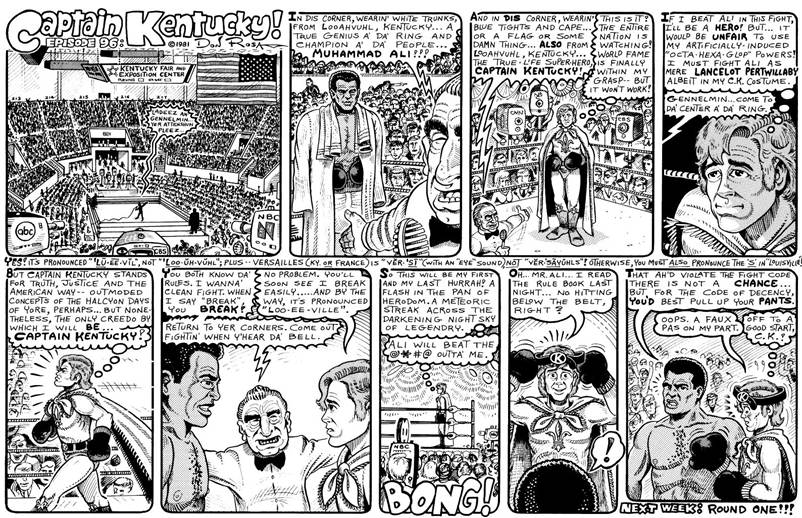
But despite his clear artistic talent, Rosa went on to get a degree in civil engineering, before going on to work in the family business for years. But he never gave up his passion.
And his background as an engineer would shine through on the page as an artist, with his technical precision, ability to design complex structures and attention to detail making every panel a meticulously constructed masterpiece in storytelling.
From early work to Disney: the birth of a Barksian
While at the University of Kentucky in the early seventies, Rosa’s first comic series, a satirical adventure entitled The Pertwillaby Papers, was published in the student newspaper. Later that decade, in 1979 he began drawing a weekly comic called Captain Kentucky for the Louisville Times, producing over 150 stories in the space of three years. But his work in the family firm eventually got in the way, and he stopped drawing comics until 1986.
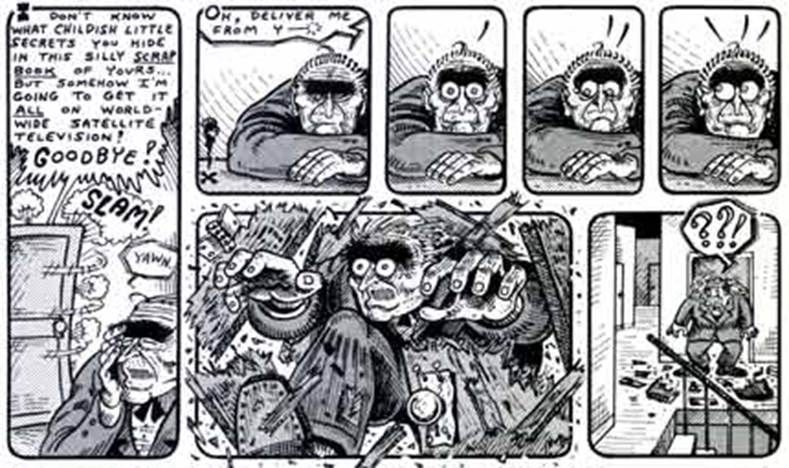
In 1986 Rosa discovered that Gladstone Comics owned the print publishing rights for Disney characters in the United States. He immediately contacted the editor, Byron Erickson, who asked him if he wanted to draw and write a Scrooge McDuck story.
Rosa’s first piece for Gladstone, The Son of the Sun (1987), was a declaration of intent. It’s an epic adventure packed with action and references to old Barks stories. It took him a good 6 months to finish it, because he was only drawing two days a week, with the rest of his time spent working for the family business. The comic was an instant hit and even picked up a nomination for a coveted Harvey Award.
Readers saw in Rosa not an imitator, but the spiritual heir to Barks and the only artist able to capture the magic of Donald Duck’s creator.

Rosa was soon commissioned by Gladstone to create more stories set in the Donald Duck universe, at which point he decided to work full time on comics. His relationship with the publisher lasted until the end of 1989, when it finally broke down over a fundamental disagreement: Gladstone refused to let Rosa keep the original artwork.
For the artist, it was a question of principle (and money, given that selling the original panels could earn him extra income), so he stopped working with Gladstone. At the time, Disney was focused on animation, and not particularly interested in producing comics, so it licensed the use of its characters in print to publishers around the world.
After his dispute with Gladstone, Rosa wrote a couple of scripts for DuckTales magazine and the TaleSpin TV series, before being hired by Danish publisher Gutenberghus (now known as Egmont) to draw and write new stories about Disney ducks.
The Life and Times of $crooge McDuck: a career-defining masterpiece
The peak of Rosa’s career came in the nineties when Egmont asked him to lead a key project: a series of comics telling the story of Scrooge McDuck. So Rosa began painstakingly researching and documenting Barks’s Scrooge McDuck stories, gathering every reference, flashback and anecdote that appeared in decades of stories and bringing them together into a single, coherent biography.
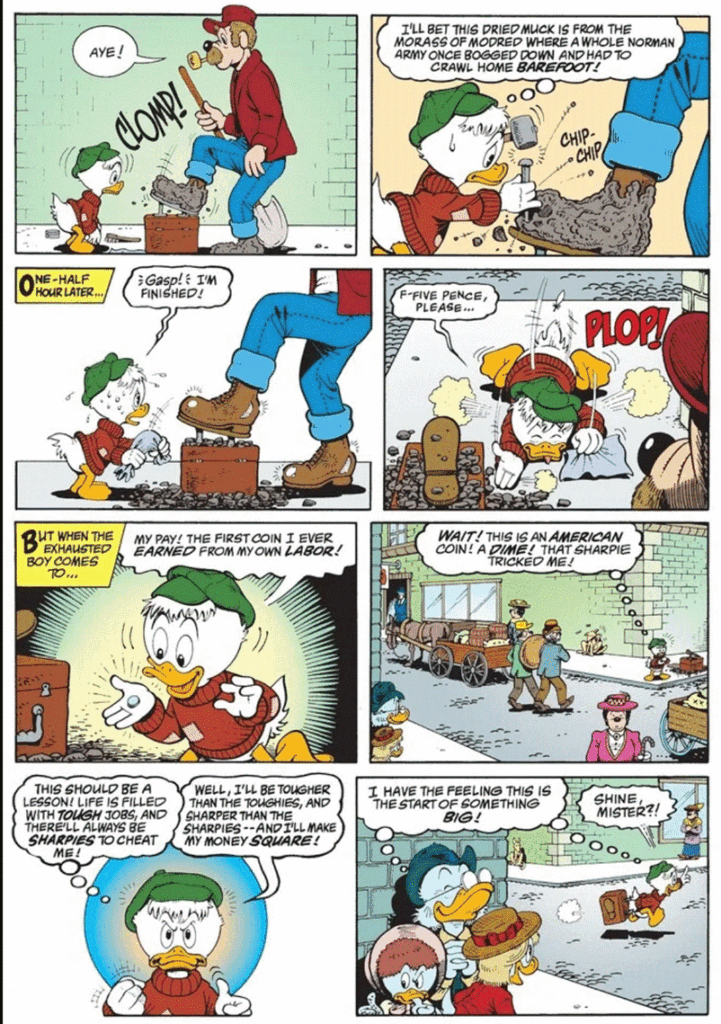
The Life and Times of $crooge McDuck comprises 12 chapters and 212 panels that were years in the making. It concludes with The Prisoner of White Agony Creek, the final episode published in 2006, some 15 years after Rosa started recounting the saga of one of Disney’s best-loved ducks.
The series fills in the back story of Scrooge McDuck up to 1947, when Carl Barks’s character made his first appearance in a Donald Duck comic. It opens with a 10-year-old Scrooge in 1877 in Glasgow, where the young duck is shining shoes to survive. He then embarks on adventures to America, where he becomes a cowboy and gold prospector in the Klondike (the place he meets the only love of his life, Doretta Doremì), then on to Australia and Africa, all the while building a fortune through hard work and sacrifice.
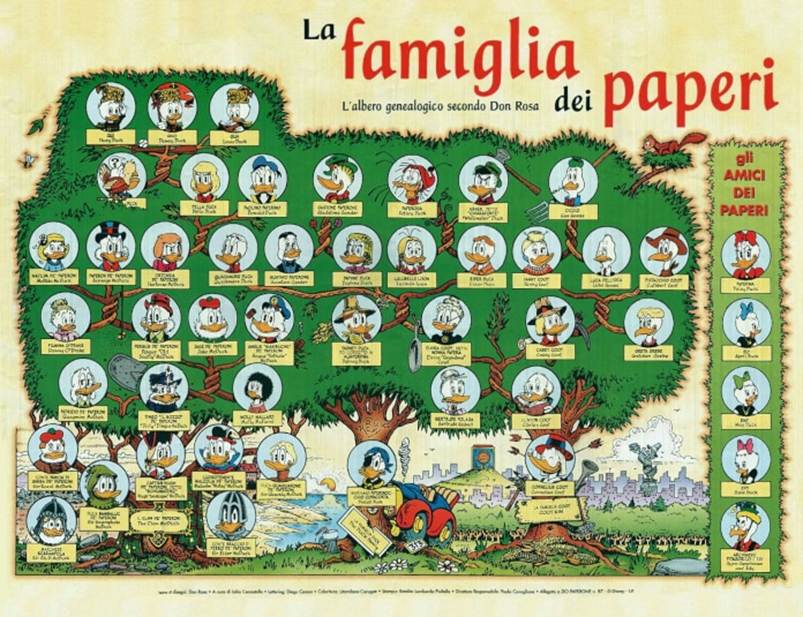
It’s a deep and melancholy coming of age story that shows the transformation of McDuck from a hopeful young duckling to a cynical old duck, embittered by life and obsessed with money. It won Rosa a prestigious Eisner Award in 1995, the comics equivalent of an Oscar.
Some have called The Life and Times of $crooge McDuck the greatest fan fiction ever drawn, but it’s clearly much more than that. Rosa fills in the blanks and joins the dots of Carl Barks’s stories, which were an obsession of Rosa’s. The references to Barks are constant, but one in particular appears time and again: hidden in the first panel of every episode is the acronym D.U.C.K, which stands for ‘Dedicated to Uncle Carl by Keno’.
Rosa also took great care in drawing the Donald Duck Family Tree, which shows all the descendants of Disney’s most famous duck.
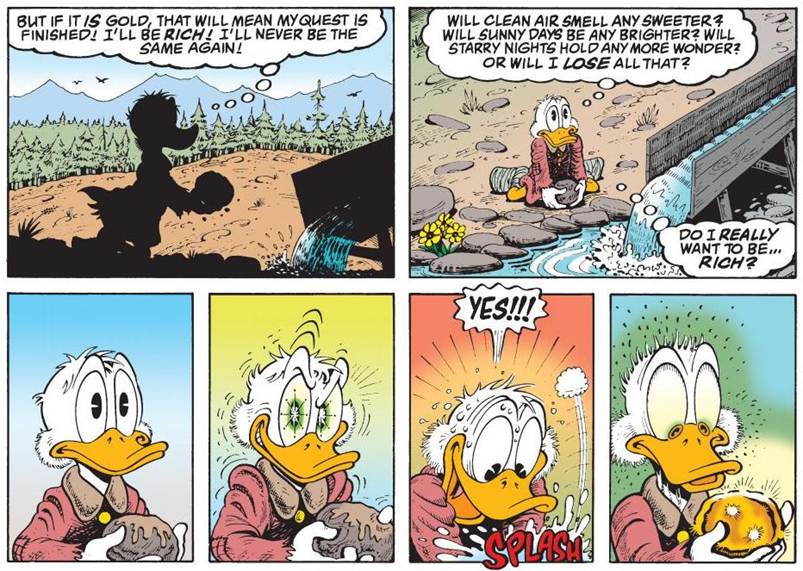
Rosa was fastidious in his world-building, giving the story of Scrooge McDuck depth and coherence, and pouring his passion for that world into every panel.
Beyond Scrooge McDuck: other memorable stories
Rosa became identified with and almost “trapped” by the Scrooge McDuck saga, but worked on much else besides within the Disney universe, publishing almost 90 comics in his career.
One of these is the Donald Duck story Return to Plain Awful, which was commissioned by Gladstone Publishing in 1988 as a sequel to Barks’s Lost in the Andes! For the comic, Rosa was inspired by an oil painting by Barks set in a remote country in the Andes and featuring Scrooge McDuck, who was absent from the original comic.
This was Rosa’s modus operandi: he took apparently unrelated works by Barks and tied them together to add greater depth to stories and characters.
The artist saw great success in Europe and the United States, especially with his work in the nineties. From Return to Xanadu in 1991 to The Lost Charts of Columbus in 1995, many of his Donald Duck comics were sequels to Barks’s stories.
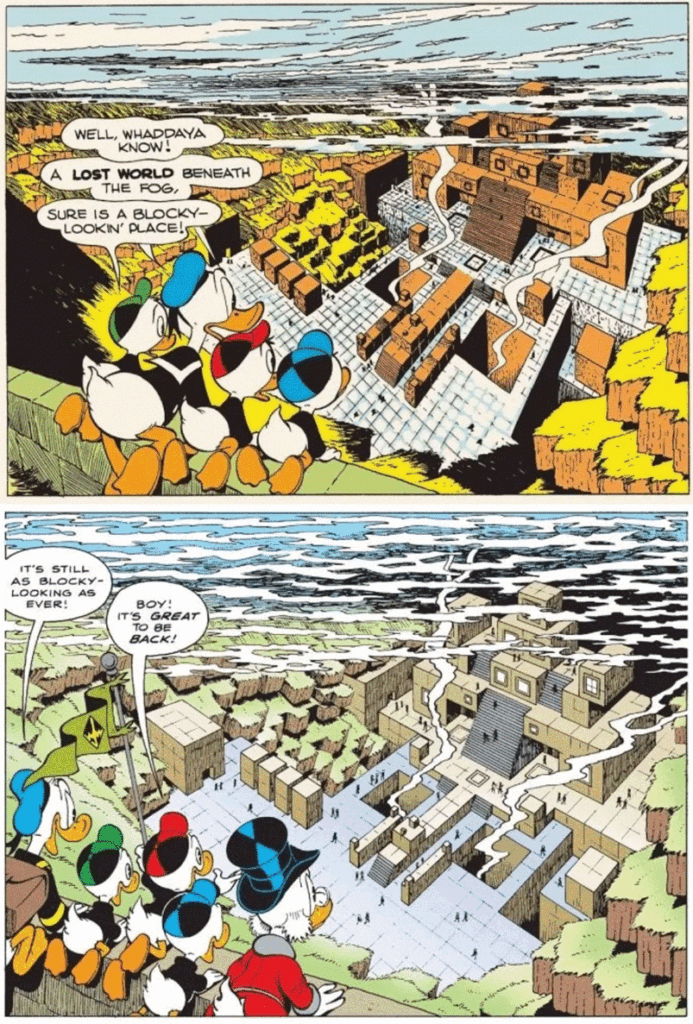
Don Rosa’s style: hyper-detail, humour and historical research
Don Rosa’s style is instantly recognisable: every panel is an explosion of detail. Every brick, every grain of wood, every single coin in the Money Bin is drawn with obsessive care. These aren’t details for details’ sake, but are designed to make the world real and tangible.
Another key part of the creative process was “historical research”. Rosa treated Barks’s stories as historical documents. Before he began drawing, Rosa would spend weeks studying to make sure that every event, every date and every place mentioned by Barks appeared in a logical and coherent way.
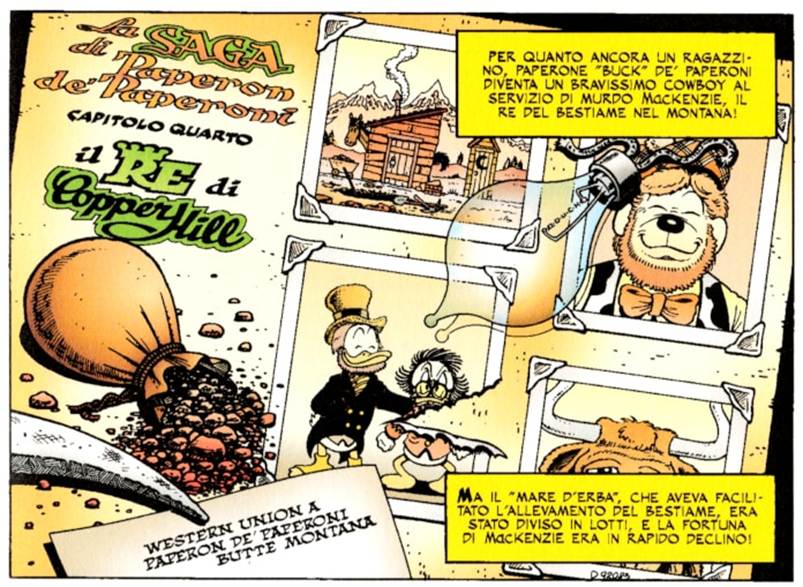
He even created a timeline for Donald Duck’s life, a personal document that he consulted religiously to ensure the correct continuity in his stories. For Rosa, Duckburg was not a fictional place, but a real city with a real story and a real geography that he mapped with his customary engineer’s precision.
Humour, too, is central to Rosa’s work, which is full of visual gags and hilarious dialogue. And this slapstick humour pairs perfectly with the epic tone of the adventures, striking the right balance between comedy and drama that’s in keeping with the spirit of Barks’s original tales. Rosa’s storytelling also has a cinematic feel, his montage of panels and use of space creating a dynamic and compelling rhythm.
Don Rosa’s legacy
Throughout his career, Don Rosa had a troubled relationship with Disney: from delays in royalty payments to the censoring of some of his work due to new inclusivity policies, there were many disputes that he found frustrating and maddening.
It was this, together with worsening eyesight, that led Rosa to retire in 2013.
Despite his retirement, Rosa’s huge legacy is more alive than ever. It shows that comics for kids can be a vehicle for epic, complex and moving stories. Rosa raised the bar for continuity and research in Disney comics, and in so doing influenced generations of authors.
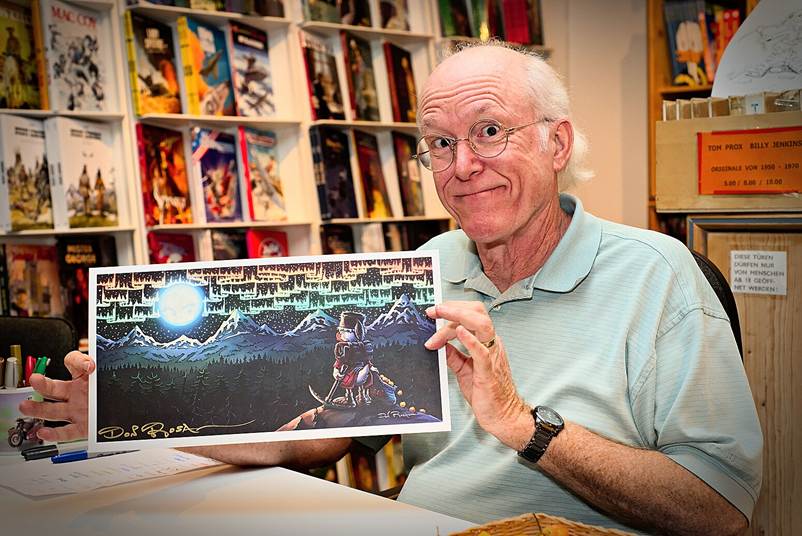
Thanks to him, Scrooge McDuck is not just the richest duck in the world, but a tragic hero with dreams and sacrifices, triumphs and regrets. A character who, with the help of Rosa as unofficial biographer, has become immortal. Today, Don Rosa is a comics rock star, applauded at conventions around the world, nowhere more so than in Europe.
Disclaimer: all images in this article belong to their rightful owners and are used for informational purposes only, to pay tribute to the great masters of comic art and their works.

